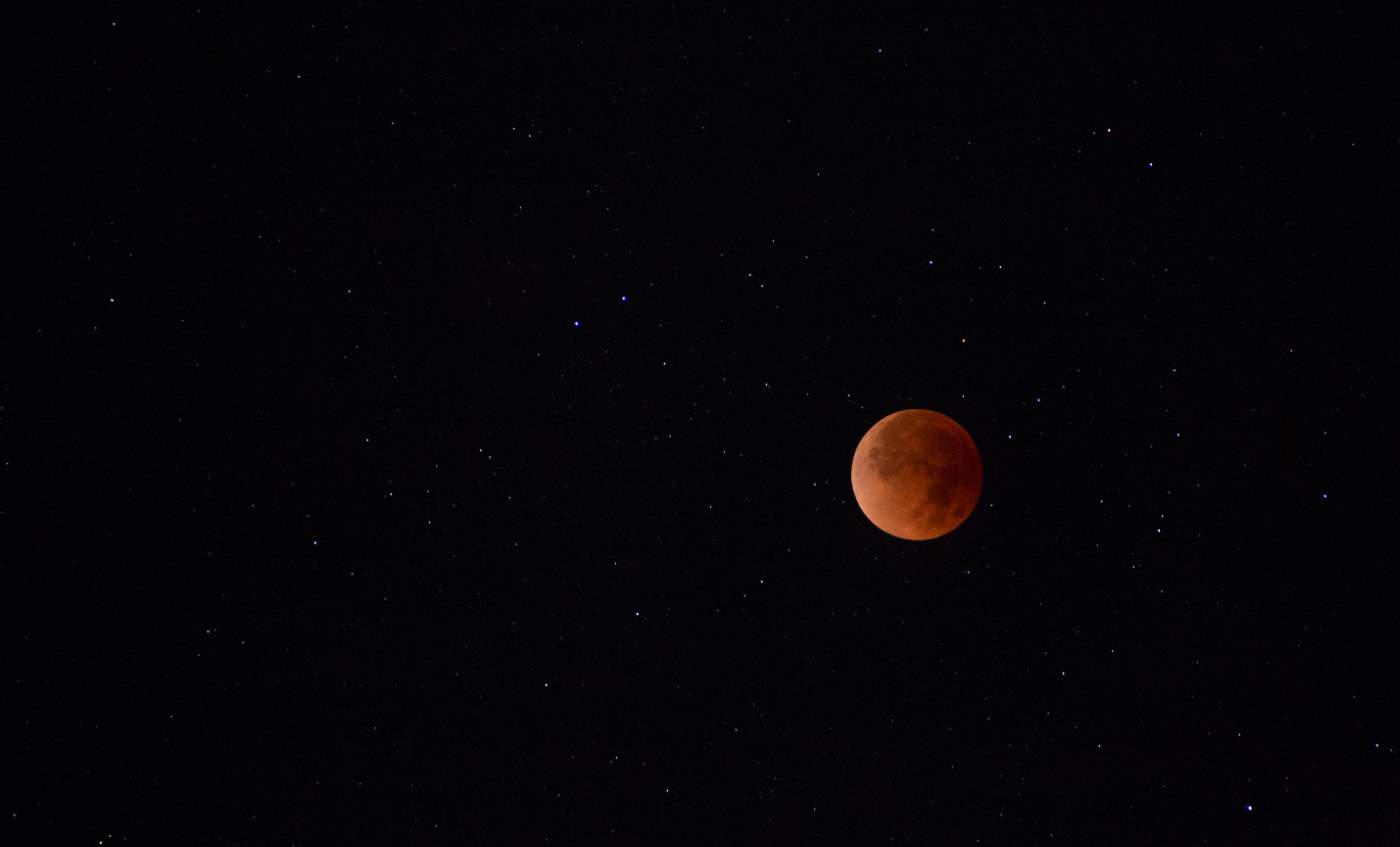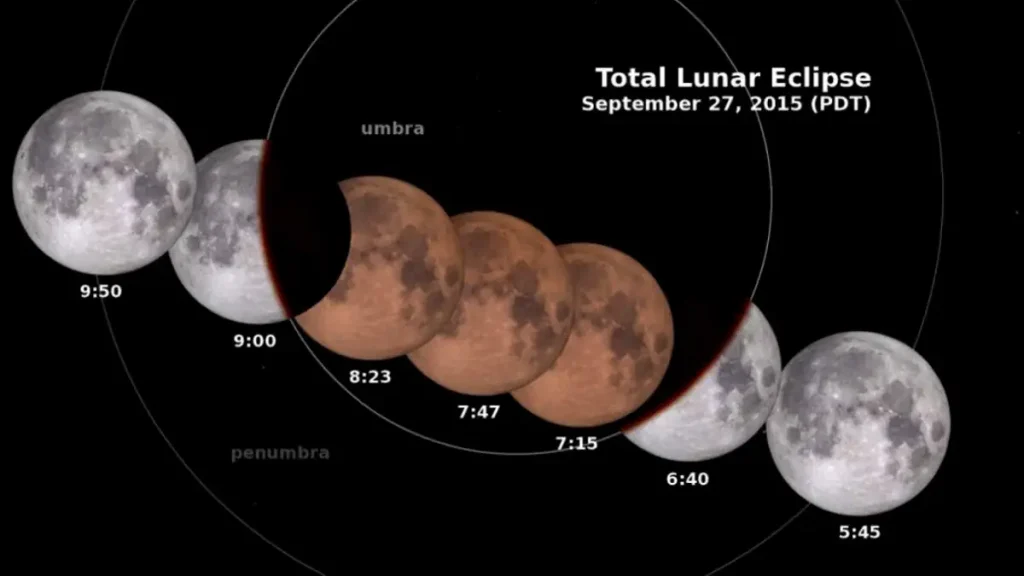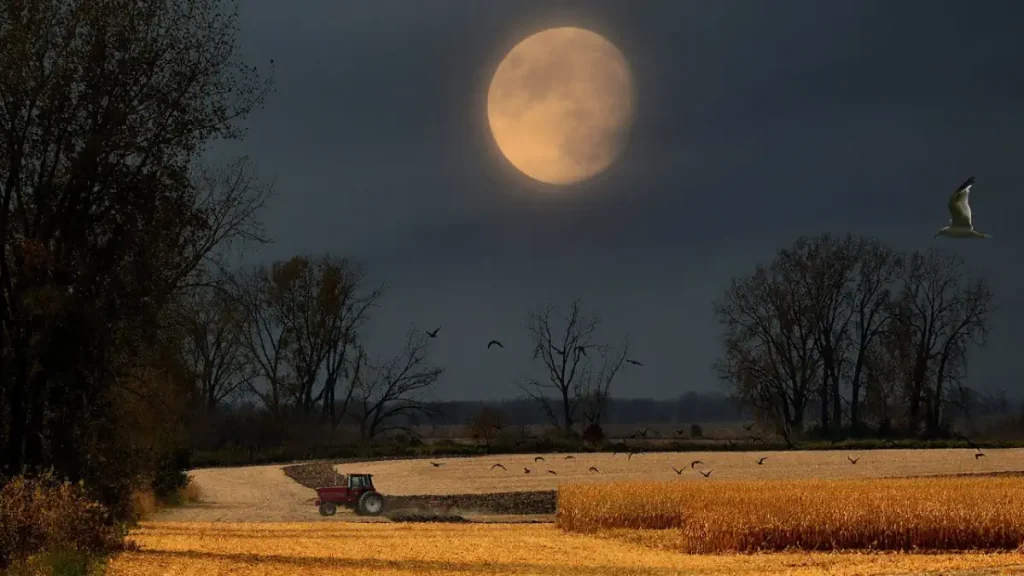The Super blue blood moon is a rare celestial phenomenon. It is made up of three coinciding events. A supermoon is a full moon when our satellite is at its closest (hence it appears bigger in the sky). A blue moon refers to an “extra” full moon, whereas a year that usually has 12 full moons has 13 instead. The “blue moon” reference is applied to the third full moon in a season with four full moons.
In addition to these two phenomena, during a lunar eclipse, when the moon passes through Earth’s extended shadow, it looks reddish, and that is a “blood moon”. When all those three phenomena occur at the same time, it’s called a Super blue blood moon.
Super blue blood moon
The last super blue blood moon occurred on January 31, 2018. The next one will happen on January 31, 2037.
As explained above, a super blue blood moon, a very rare celestial sight is made up of three coinciding events: a supermoon, a blue moon, and a blood moon.

What is a supermoon?
When it’s a full moon and the moon is at its closest point to the Earth, it’s called Supermoon. As a result, the moon appears larger and brighter than usual in the sky.
What is a Blue Moon?
The phrase has nothing to do with the actual color of the moon. A blue moon is an additional full moon that appears in a subdivision of a year: either the third of four full moons in a season or a second full moon in a month of the common calendar.
Full moons are separated by 29 days, while most months are 30 or 31 days long; so it is possible to fit two full moons in a single month. This happens every two and a half years, on average.
A literal “blue moon” (when the moon appears blueish in the sky) may occur in certain atmospheric conditions: e.g., if volcanic eruptions or fires leave particles in the atmosphere of just the right size to preferentially scatter red light. But it’s completely a different phenomenon than a “blue moon”.
What is a Blood Moon?
Like Super Moon, Blood Moon is not a scientific term. In recent times it is being widely used to refer to a total lunar eclipse because a fully eclipsed Moon often takes on a reddish color. See the NASA image below, when the moon passes through Earth’s extended shadow, the penumbra, it looks reddish. When it passes through Earth’s central shadow, the umbra, it’s naturally black and that is the eclipse.

What is a harvest moon?
There’s also another phenomenon called the “harvest moon”. The term refers to the full, bright Moon that occurs closest to the start of autumn. The name dates from the time before electricity when farmers depended on the Moon’s light to harvest their crops late into the night.
The Moon’s light was particularly important during autumn when harvests are the largest.

Sources
- Blue Moon on the NASA website
- Super Blue Blood Moon on the NASA website
- How Many Elephants are Left in the World in 2025? - August 17, 2025
- Moon Landings: All-Time List [1966-2025] - February 2, 2025
- What Is Max-Q and Why Is It Important During Rocket Launches? - January 16, 2025